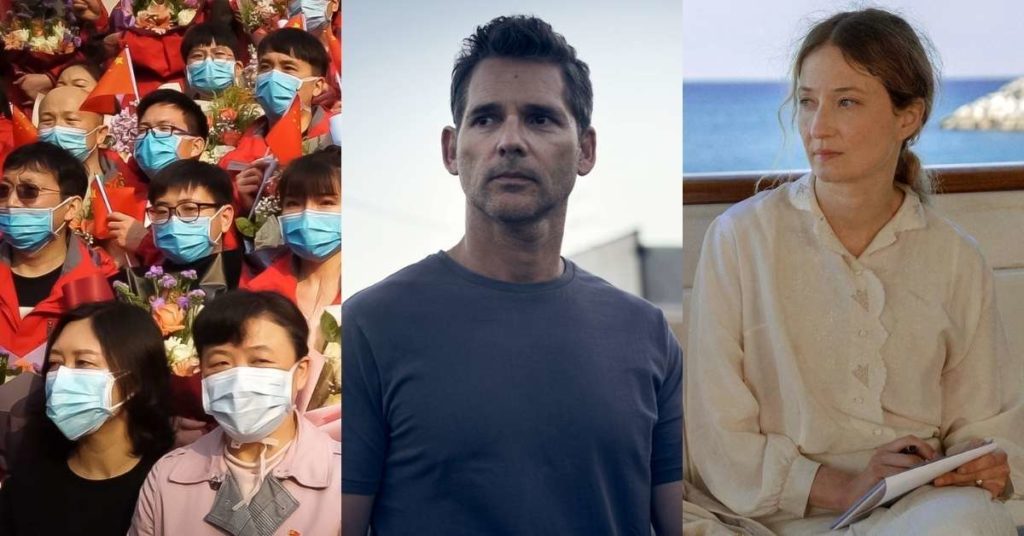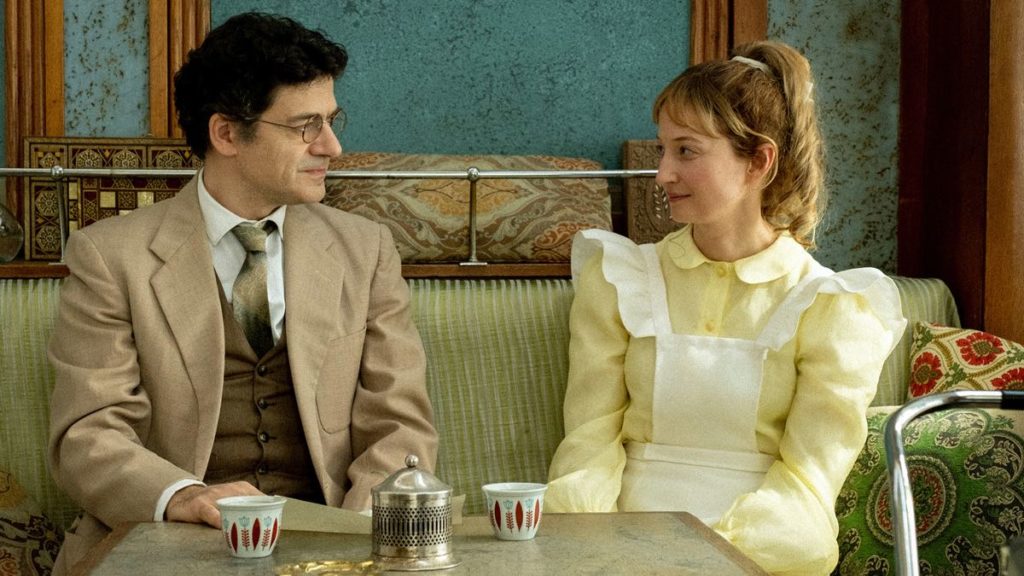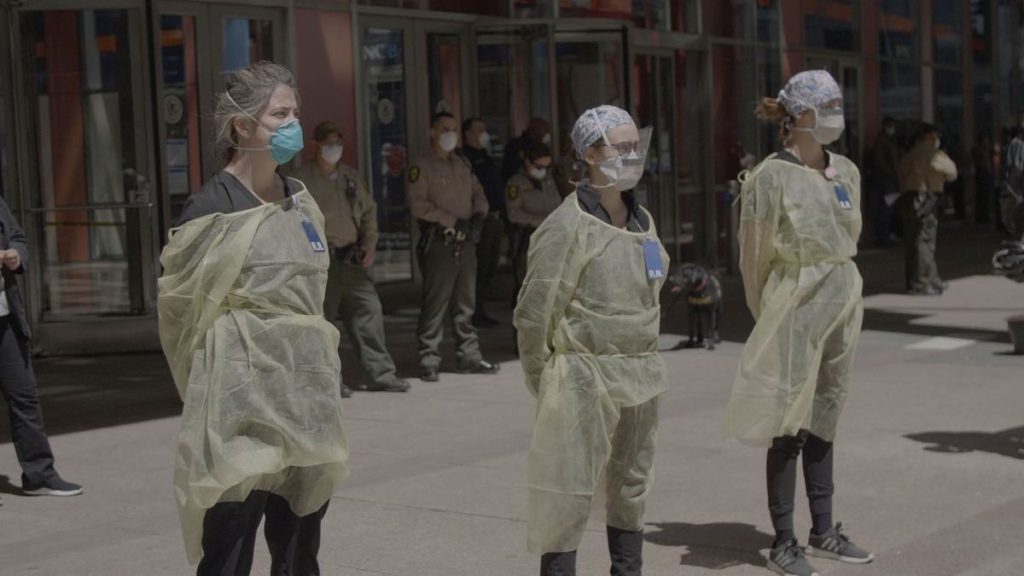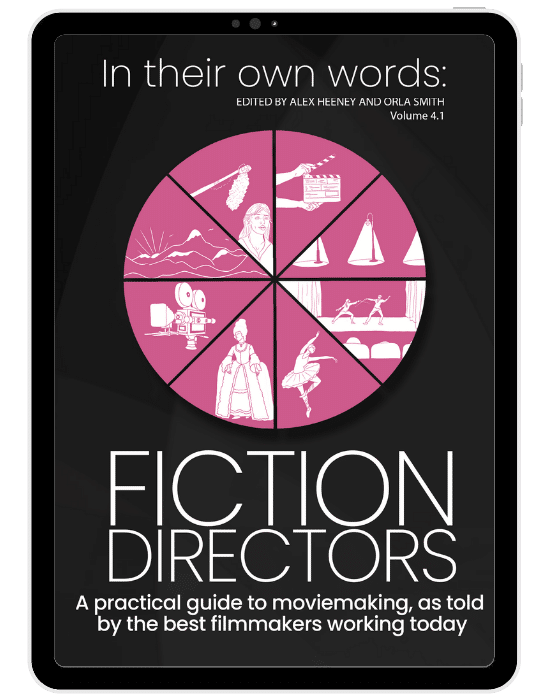The 2021 San Francisco International Film Festival went virtual and featured highlights such as the Dry, Skies of Lebanon, and In the Same Breath.

An in person vs virtual experience at the San Francisco International Film Festival
When I first started covering the San Francisco International Film Festival (SFIFF) a decade ago, I was living in Palo Alto, and a trip into the city to catch a screening at the festival meant three plus hours in a round-trip commute. I’d go into the city for the day and try to cram two or three films into my schedule. Often, I’d catch up with big ticket films straight from Sundance — even though, for most of those years, I also attended Sundance. I discovered a lot of great films at the festival, some previously anticipated like Love & Friendship, and others, usually foreign, like All These Sleepless Nights. I still treasure being there in the flesh when Steven Soderbergh delivered his State of Cinema address which would be reported on internationally, back when he thought he was retiring. And sometimes, getting transported to Patagonia, Argentina, on the big screen, was satisfying enough, even if The Reconstruction wasn’t great.
But dragging myself out to San Francisco was a hassle, and over the years, I became increasingly reliant on screeners, a perk of being press, instead of exhausting trips into the city. In other words, for years, my festival experience had been a lot like what it was for punter festival-goers this year: digital, online, from my couch. Even when I was trekking into the city, I was still catching smaller films on my iPad or TV, many of which are the films I remember most from those years, like Of Horses and Men, Unexpected, and Museum Hours.
What’s become increasingly clear over the course of the last year of virtual festivals is that great films hold up on the small screen; mediocre films fall short. If the only thing a film has to offer is great vistas or impressive sound, the cinema experience might help you overlook the clunky pacing. If a mediocre film is going to be followed by a Q&A with one of your favourite actors or directors, you let it slide. But when you’re stuck with your home stereo, even if it’s a good one, the HVAC can be loud, you can find yourself straining to hear the dialogue when no captions are provided, and well, the appeal of the Australian desert loses some of the sheen that it might have had in the Castro Theatre.
The Dry
Such was my experience this year with The Dry, Robert Connolly’s whodunnit thriller, starring an excellent Eric Bana, and set in rural Australia amid a drought. Admittedly, I booked my ticket for the Australian scenery. As gorgeous as it is, I couldn’t quite get fully consumed by it in the way I might in a cinema. Instead, I was aware of the plodding plot, and the fact that I was repeatedly missing key details because I just couldn’t hear what anyone was saying half the time. I was constantly adjusting the volume on my TV, to its max for some dialogue scenes, and then way, way down when the score took off. Needless to say, it wasn’t an ideal experience for a thriller.
Which is not to say that The Dry is bad, so much as that it’s average, and my viewing experience made that particularly apparent. It’s been almost a decade since Bana has made a film I wanted to see (Lone Survivor, Closed Circuit), and it was a pleasure seeing him get some material to dig into as a detective and a Man With a Past returning home for a funeral, only to end up being pulled into solving a murder case. Bana has particularly great chemistry with his character’s childhood friend (Genevieve O’Reilly). Watching them dance around their shared history and current attraction was worth the price of entry. Still, I left the film underwhelmed, if interested in reading the book on which it was based.
Skies of Lebanon

By contrast, Skies of Lebanon is exactly the kind of film I would have gladly watched on a screener any other year, and held up fine as a home viewing experience. Chloé Mazio’s directorial debut stars the always excellent Alba Rohrwacher as Alice, a Swiss woman who moves to Lebanon, falls in love, builds a family, and finds herself in the middle of the Lebanese Civil War. It’s a film that brings to light how major political changes can happen while you’re wearing your pyjamas, that a war can be just outside your door and yet seem like a faraway, abstract concept.
Based on her grandmother’s story, Mazio’s Skies of Lebanon is a memory piece that deliberately plays with our sense of realism on screen. The films early scenes play out in front of obviously painted backdrops, and there are heightened theatrical elements: a split screen phone call from home in which Alice’s parents beg her to return to Switzerland finds her physically being pulled toward the other half of the frame by the cord, only for her to yank it back and have the phone line grow literal roots in Lebanon. As the political conflict becomes a reality, the settings become real locations, too. The characters feel more like sketches than three-dimensional, lived in people, but there’s a lot of life in the frame. At the same time, I’m glad I didn’t travel three hours to see it.
In the Same Breath

For years, SFIFF’s programmers have relied heavily on Sundance selections to fill out the programming. Even after I started attending Sundance annually, I counted on my local festival as a second chance to see films I’d skipped or missed in January. With Sundance going digital this year, it might seem like SFIFF’s repeat screenings hold less value, but having attended both, I felt much the same as in past years: I was glad to catch up with Sundance films I’d missed, and I imagine locals would enjoy not paying an arm and a leg for each screening (or having only a three-hour window to watch it in!). Among this year’s films straight from Sundance were In the Same Breath, Strawberry Mansion, Cryptozoo, and Captains of Za’atari.
This year, I caught up with Nanfu Wang’s Sundance opener, In the Same Breath, about the early stages of COVID in China, the propaganda around it, and its effects on the country and the world. Wang’s voiceover narration of her own experiences with the rise of COVID serves to put the audience in her shoes, sharing her confusion, surprise, and fear with how the events unfolded. With great precision, Wang eerily depicts the propaganda machine behind China’s COVID response — especially scary when you can see a handful of different news anchors across the country delivering identical reports, in split screen, in unison.
Wang illuminates how China’s silence around COVID affected families, and led to lost lives as hospitals regularly turned away patients in the early days — not because they were full, but because they knew about COVID when regular people did not. Revisiting her subjects months after they lost family members to COVID, we expect them to be disillusioned with the government’s mishandling of the crisis. Instead, Wang discovers they’ve become grateful patriots, sure the government did its best. It’s a harrowing sight to think that people learned nothing from all of this devastation because the mismanaged government managed its propaganda so well. Spookier still is when Wang draws parallels with the disasters in the US and China, showing similar tactics being used in the media and silence around the real devastation. In the Same Breath is an important work of citizen journalism, and Wang’s personal connection to the narrative that she weaves throughout gives it particular emotional resonance.
You could be missing out on opportunities to watch great films like In the Same Breath at virtual cinemas, VOD, and festivals.
Subscribe to the Seventh Row newsletter to stay in the know.
Subscribers to our newsletter get an email every Friday which details great new streaming options in Canada, the US, and the UK.
Click here to subscribe to the Seventh Row newsletter.

Discover how the best filmmakers working today approach filmmaking
A practical guide to moviemaking, as told by the best filmmakers working today.

